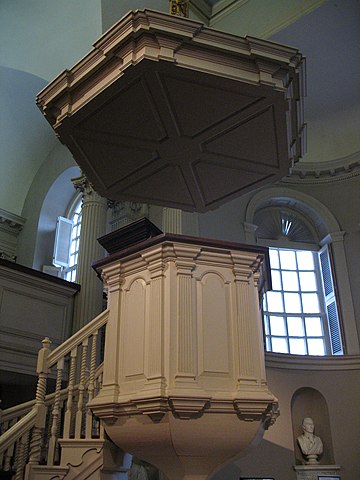But the name Jack in the pulpit never made much sense to me until I lived in New England. In the southern Unitarian church I grew up in, a pulpit wasn't something you could stand in. It was just a stage with a lectern on it.
One day, I walked into King's Chapel in Boston (built 1689) and I got it. Their pulpit isn't a stage; it's a little cubbyhole, with a roof, just big enough for one person to stand in. This architectural arrangement would have been familiar to the early European settlers who gave Jack in the pulpit its name.
 King's Chapel pulpit, taken by Kjetil Ree |  Jack in the pulpit, taken by Susan Tryforos |
As they mature, if you look closely, you'll see that in one "flower" there are actually many tiny flowers, lining the Jack (which botanists call a spathe). These tiny flowers can be either male or female, and often one plant has flowers of only one sex in a given year.
So, sometimes the Jack is really a Jill.
Even better, most plants change the sex of the flowers they make over time. Younger, smaller plants start off producing only male flowers. Older plants have had more time to store up energy in their roots, and will produce more leaves and female flowers.
It's the female flowers, of course, that can produce fruit. You'll see the beautiful red berries of

























